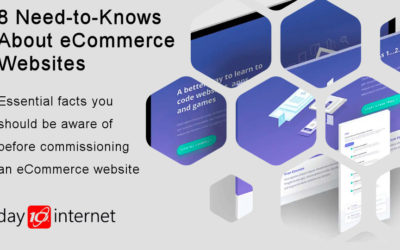So you’ve decided that you want a website? What’s the first thing you’re going to do? Look at the websites of similar companies to yours and get an idea of the design you’d like? Approach a number of web designers and get a bunch of quotes? Start designing it yourself? Sign up for one of the self-build services such as 1&1 My Website?
Pick any one of these and you’d be on the fast track to throwing away your money and effort.
The first thing you need to do is to decide what you want the website to do for you; decide what the purpose of it is in other words. What do I mean by this?
There are a number of different types of website and the results you should expect from each vary. For the purpose of simplicity, here are three of the most popular types.
Brochure Sites
Typically these are small sites of 3-5 pages. They usually give a brief description of your company, the products or services you supply, some examples, and your contact details.
Because of the limited content, brochure sites are unlikely to be ranked high on search engines other than for very specific keywords. A brochure site should be designed to be search engine friendly, as should all websites, but don’t think you will be able to get it ranked on the first page of Google simply by doing more and more search engine optimization.
You should treat a brochure site as complimentary to your other advertising. Place the url (http://www.yoursite.co.uk) in your email signature, on your offline advertisements, on your business cards, and letter heads etc. People can then go to the site to find out more about your company and see examples of your work.
Brochure sites are relatively inexpensive. Expect to pay between £300 – £500 plus a small annual hosting cost.
Primary Advertising Sites
If you decide you want your website to be the primary focus of your marketing efforts and expect to get a significant number of leads from it then you will need a website that has a significant amount of content. The site has to attract search engines to it so that they will give it sufficient ranking that it will attract visitors. It also has to hold those visitors’ attention and persuade them to contact you.
Don’t expect this type of site to be cheap. The actual design should be clean, professional and straightforward. No gimmicks or clever navigation. The key to success is the content, so don’t spend vast amount of money on the design and then cheapskate on the content. The content should be designed such that it clearly and immediately shows the visitor what your company is about. It should be compelling enough to hold the visitors’ attention and then persuade them to make an enquiries.
The content should also showcase you as an expert in your field and you can do this with a blog to which you frequently post articles. The aim of this is to qualify your leads such that when people contact you, they already see you as an expert and are more likely to do business with you.
Initial design and build for this kind of site is going to be upwards of £500-£600 but you will need to update the site frequently and this will require additional ongoing cost or effort on your part. Ideally the site needs to be updated at least once a week with blog posts.
eCommerce Sites
If you’ve decided that you want to sell products online then you will need an eCommerce site. I’m not talking here about selling the odd few products, which you can do with simple add-ons to any site, I’m talking about selling lots of products.
If you decide that you need to go down this route then you need to plan carefully because you will need to structure your business around selling online. Firstly you need to think about how you will handle all the offline functions, such as packing, shipping, billing, stock control, complaint handling, returns etc.
Also, you will need considerable focus on marketing. Search engine optimization to get the site listed on the organic (free) listings will not be enough. Pay-per-click advertising usually works well for eCommerce sites and you should consider combining this with offline marketing.
An eCommerce site will not be cheap. Setup costs can be in the region of £1000 – £1500 but can be much higher depending on the numbers of products added to the site. eCommerce site owners usually add products to the site themselves. If you go down this route you will need image processing software, such as Photoshop or Paintshop Pro, to manipulate images prior to uploading to the site.
Conclusion
There are other types of site in addition to the three mentioned above. But the key thing, whatever type of site you decide you need, is to plan.
Firstly, before you approach a web designer, decide what you want from the site, how much you’re prepared to spend and how much effort you can put into it yourself. Then you’ll be in a position to discuss the site with web designers and decide the shape of it, how it will be marketed and how it will be maintained.
Fail to do the planning work upfront and you will be planning to fail and throwing your money away.






